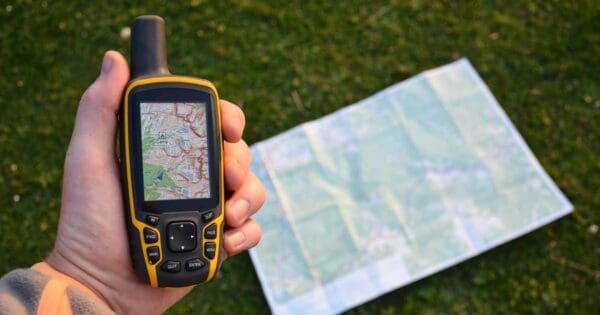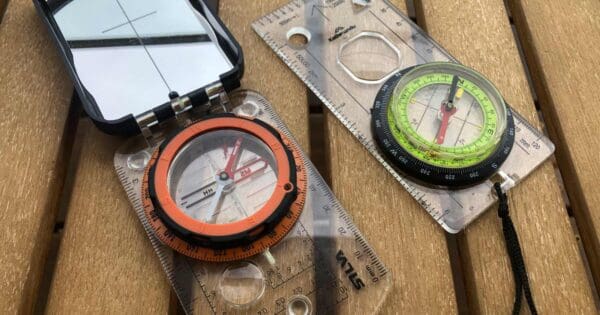Enhance your navigation skills with rogaining
While hiking is a relatively safe outdoor activity, it is only safe if you are prepared and know how to navigate the Australian bush. The key to any successful hike is knowing where you are going, where you have been and how to return safely. If you don’t know how to read a topographic map, use a compass or navigate a hiking trail using other aids, then its worth considering the hikes you plan to undertake as some hikes will require more advanced navigation knowledge.
Even experienced bushwalkers can neglect their navigation skills, but when the trail peters out or is covered by snow, knowing how to locate yourself and blaze your own path back to safety is absolutely essential. And even in the age of GPS and smartphones, the most dependable way to make sure that you stay on track is by carrying a map and compass and knowing how to use them.

How do you develop map and compass skills?
There are a few options available including; online courses, in-field courses, books, YouTube, self taught, someone you know. All these come with a varying degree of cost with some two day training courses costing upwards of $1000 per person. Iv’e grown up around the bush so am mostly self-taught but I did get into rogaining for a while to have a bit of fun with family and friends as well as polish up my confidence in a safe environment.
If you’re looking to learn or sharpen up your skills, give rogaining a go.
Orienteering and Rogaining are fun and exciting sports that are all about getting out in the bush or the urban environment and using your navigation skills. If you enjoy cross country running, bushwalking, hiking or just spending time outdoors while challenging yourself, then this is the right sport for you. Rogaining is a real adventure sport and is a lot of fun.
Rogaining also provides a fantastic opportunity for those wishing to develop their map and compass navigation skills. Learning in a fun, real-life environment produces better results than sitting in a classroom. Many of the Rogaining Associations offer training to members who are looking to enter their first rogaine event or rise to the top of field? Delivered by experienced rogainers, training is designed to you sharpen your skills and get out there with confidence.
Rogaining is also an excellent team sport – ideal for scouts and families that want to explore an area on foot or bike. I got my boys started when they were 8 and 10 and its exciting to see their navigation skills develop and their confidence on the trail increase as a result.

Orienteering vs rogaining
The goal in both orienteering and rogaining is to find the checkpoints that are marked on a map as quickly as possible. The map is handed out to competitors at the start of the event. Checkpoints are marked with a white and orange flag. When you finally find a checkpoint – after careful route planning, careful navigation and/or a bit of luck, you use the manual or electronic puncher hanging off the checkpoint to mark it on your control card or electronic timing device. Then you make your way to the next checkpoint or you can decide to make your way to the finish line.
There some differences between rogaining and orienteering. In Orienteering checkpoints have to be visited in a specified order. The fastest competitor to visit all checkpoints in the right order and return to the finish wins. Orienteering events typically last for 1 to 3 hours but can last for longer.

What is rogaining?
Rogaining is the sport of long distance cross-country navigation. The championship rogaine is a continuous twenty four hour event. Teamwork, endurance, strategy and map reading are features of the sport. Rogaining originated in Australia, where the sport can be traced to the creation of the rules in 1968 and the first intervarsity 24 hour score orienteering competition in 1969.
The objective of rogaining is to collect the highest score by finding checkpoints within a set time limit. Teams of two to five members travel entirely on foot, navigating with the aid of a topographic map and analogue compass. Teams select their own order of visiting checkpoints, in terrain that varies from open countryside to hilly forest. The classic rogaine includes both day and night navigation.
At many rogaines a central base camp provides hot meals and teams may return at any time to eat, rest or enjoy the fellowship. Teams travel at their own pace, and anyone from children to grandparents can experience the personal satisfaction that comes from cross-country navigation at individual levels of competition and comfort.
Rogaining aims to support and encourage people to develop respect for and enjoyment of rural and forest environments; and to encourage the development of navigational skills, self reliance, general fitness, and the ability to work in a team.

What’s involved?
The traditional rogaine is 24 hours in duration. However, there are also shorter events of 6, 8 and 12 hours. Most events are located within a two hour drive of major cities. Rogaines are held on foot in picturesque bush and farmland locations, however, some events are held in metropolitan areas (Metrogaines), on bikes (Cyclogaines) and on cross-country skis (Snogaines).
Who is it for?
Rogaining is a team activity for people of all ages and levels of fitness. Everyone from elite athletes to families with young children can enjoy rogaining. New rogainers are always welcome and event organisers are willing to help you get started. The parts of the course you visit are entirely up to you and your team members. There are no set routes and you don’t have to spend the whole time on the course. You can even return to the Hash House at anytime for some hot food and rest around the campfire, or even a sleep, before heading out again. Some competitive teams may cover 50 km in a 12 hour event and even more in an event of 24 hours duration. However, the distance you travel is entirely up to you. The satisfaction comes in finding your way around the course according to the route that you have chosen, and navigating back to the finish within the time limit.
What do you need?
Rogaining is good value for money; all you need is basic bushwalking gear including a compass, whistle, pencil, water bottle, comfortable and warm clothes and shoes, and a basic team first aid kit. On 12 and 24 hour events you may also wish to bring along camping gear and spend some time resting overnight at the Hash House.
What does it cost?
Entry fees vary from $20 to $80, depending on the event. This covers hot food during and at the finish of the event, your map, information sheets and facilities at the Hash House.
How does it work?
Between 1 and 3 hours (depending on the length of the event) before the start of the event, each participant receives a map of the course with all the checkpoints marked on it. They also receive a description of the checkpoints and their point values. Teams choose their own route to get to whichever checkpoints they want. It is important to get back before the time limit expires as there are hefty point penalties for being late. At each checkpoint there is a punch to make a hole at the corresponding numbered square on the control card. Rogaining is a team sport and the team MUST stay together at all times.
Enjoy the challenge of exploring new places? Love being outdoors? Want to give your strategic brain a workout? Rogaining is the sport for you. Grab one or more team mates and join the next event to see where the map takes you. Adventure is guaranteed!

National rogaining calendar
Search the National Rogaining Calendar to find a rogaining event near you.
Source: Australian Rogaining Association
.jpg)
.jpg)
.jpg)
.jpg)
.jpg)
.jpg)
.jpg)
.jpg)
.jpg)
.jpg)
.jpg)
.jpg)
.jpg)
.jpg)






What’s your go-to tip for mastering navigation with a map and compass when you’re out in the bush? Any memorable experiences that put your skills to the test?